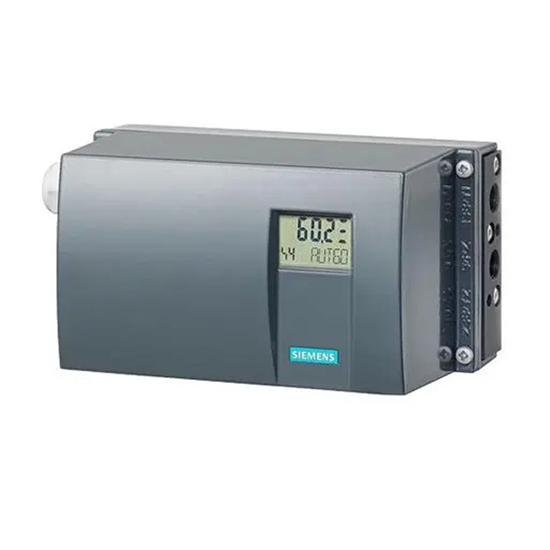Valve Positioner
1.Precision: Accurate actuator positioning.
2.Feedback: Continuous monitoring.
3.Versatility: Broad usability.
4.Efficiency: Optimal valve positioning.
5.Safety: Prevents valve misalignment.
6.Adaptability: Consistent control under variable conditions.

Every LORZEN Valve Positioner has gone through highly controlled conditions to ensure the high quality of your Actuator Accessories.
Product Features:
Positioner: Controls the valve position based on control signals.
A positioner is a device used in control systems to control the final control valve, based on a control signal. It compares the actual position of a control valve to the desired position (the control signal) and sends the appropriate commands to the actuator to correct any differences.
In essence, a positioner ensures that the control valve opens, closes, or partially opens to the correct position in response to a control signal. This control signal is typically an electrical or pneumatic signal from a process controller.
Positioners are used in a variety of industries where precise control of fluid flow is necessary, such as in chemical processing, oil and gas production, and power generation. They are vital in these applications because they allow for more accurate control of the process, leading to increased efficiency and safety.
Performance Testing
Our state-of-the-art facilities allow rigorous testing to validate function, endurance and environmental protection.
Quality Assurance
100% testing and inspection ensures superior performance of every actuator.
LORZEN Actuator Accessories Are Utilized Across Various Sectors, Including:
Actuator Design
Valve Positioner Search
Under normal operating conditions. a safety factor of 20% - 30% is considered for double acting actuators
Example:
Valve torque= 100Nm
Safety torque- 100(1+ 30%) = 130Nm
Air source pressure=5Bar
Compared with the double-acting torque table, the specification of the optional Double-acting actuator is DA105.
- +8613736966003
- sales@lorzval.com
- Lorzen Factory Park, Linyang Industrial District, Oubei Town, Yongjia County, Wenzhou City, Zhejiang Province, China
Valve Positioner Related Information
Installation and Maintenance
Installation and Maintenance
The installation and maintenance of a Actuator are relatively straightforward. Here are some basic steps:
Installation: During the installation process, it’s important to ensure the actuator is correctly aligned and secured in the right position. The actuator should be properly interfaced with the driven device (such as a valve or other mechanical component) to ensure accurate and efficient operation.
Maintenance: Maintenance of the actuator typically involves regular inspections and replacement of worn parts. This might include replacing seals, cleaning and lubricating moving parts, and checking and adjusting the control system. In most cases, just carrying out these maintenance steps periodically can ensure long-term reliable operation of the actuator.
Industry Applications/Functional Uses
Industry Applications/Functional Uses
Actuators have a wide range of uses in many different industries and applications. Here are some of the main application areas:
Manufacturing: On automated production lines, these actuators can be used to control a variety of mechanical equipment such as valves, drums, conveyors, etc.
Energy Sector: In the oil, gas, and electricity industries, these actuators can be used to control various types of valves, ensuring efficient distribution and use of energy.
Chemical Industry: In chemical processes, these actuators can be used to precisely control conditions for various chemical reactions, such as temperature, pressure, and flow rate.
Water Treatment: In water treatment facilities, these actuators can be used to control various equipment like pumps, valves, and filters, ensuring effective water treatment.
Food and Beverage Industry: In the production process of food and beverages, these actuators can be used to control various equipment like mixers, ovens, and packaging machines, ensuring efficiency and quality in the production process.
These are just some of the main application areas for Actuators. Thanks to their simple design and operating principle, these actuators can adapt to a variety of different applications and environments.


